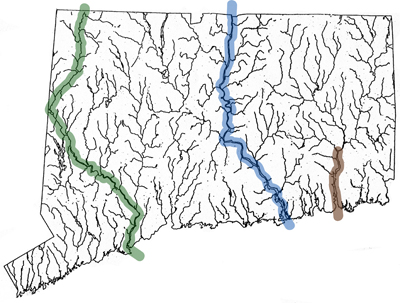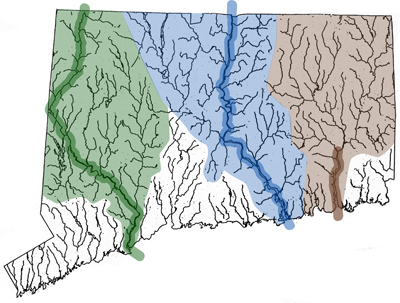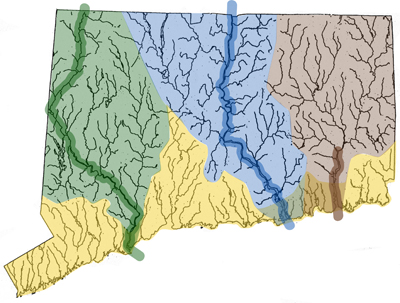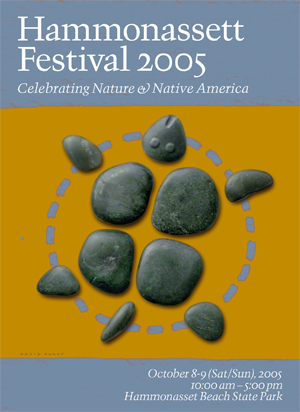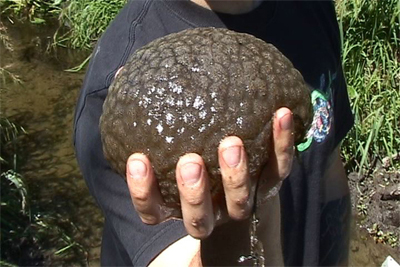The Hurricane Katrina disaster shows a need for municipalities to weigh short-term gains to be had by developing areas such as wetlands against the long-term benefits of a healthy environment.
The NY Times reported that the development of ports in the Mississippi Delta led to declines in marshes there, and a loss of natural flood controls. “People realized what a terrible bargain the region made when it embraced environmental degradation for economic gains.” (NYT, 8/30/05). The report, and another on
CNN.com, echoed a 2004
National Geographic story about marsh losses in the Louisiana bayou.
That coastal wetland development comes at a price is an old story—with its own history in Connecticut. “[CT tidal] marshes have been viewed as expendable,” Richard Goodwin, of the
Connecticut College Arboretum, wrote in 1961. “If the public recognized these areas as resources of importance to our welfare their destruction would be curtailed.” On Saturday, the boys and I walked the length of what remains of the tidal marsh at
Sherwood Island State Park, along East Beach to the inlet, to explore the issues Goodwin wrote about.
In 1961, Connecticut tidal marshes were also in rapid decline. Practices such as the dumping of millions of cubic yards of construction fill, as was done to add parking at Sherwood Island State Park in 1956, obliterated CT marshes at a rate Goodwin projected would destroy 86% of them by 2000. (
CT’s Coastal Marshes, CT College Arboretum, No. 12, 1961).
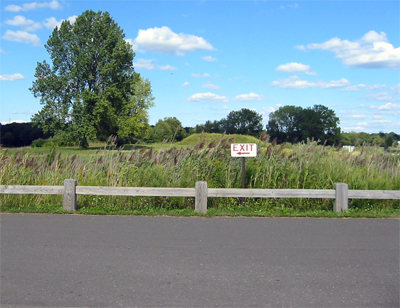
The view toward the marsh from the lot where we parked, atop 3.5 million cubic yards of fill. The parking lot replaced much of what was then the last publicly owned marsh west of the Housatonic, a wetland once enjoyed by kids, birders, crabbers and duck hunters, and that fed valuable seed oyster beds, clam beds and fisheries offshore.
An estimate by CT DEP found that between 1880 and 1970, the State lost an average 70 acres of tidal wetland per year, at times as much as an acre a day. At least a third, and perhaps as much as half, of all CT tidal wetlands were drained or filled. Stamford, Fairfield, Bridgeport, Stratford, New Haven and New London lost 60% of the marshes within their borders. (
Wetlands of CT, CT State G&NH Survey, 1992.
Tidal Marshes of LIS, CT College Arboretum, No. 34, 1995).
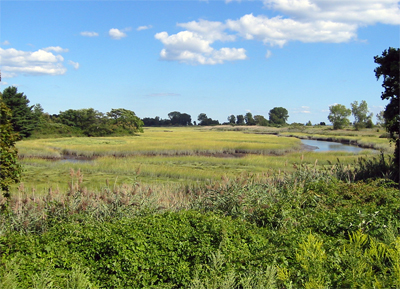
A view of the portion of the original tidal marsh that remains at Sherwood Island today. Out of frame to the left (but not out of earshot) are the Metro North railroad, and the CT turnpike (I-95).
Today, Goodwin's 1961 publication marks a turning point in the destruction of CT tidal marshes. His vision of protective acquisitions, controls, zoning changes, and education has since been enacted to stem declines. Some 17,500 acres of CT tidal marsh are now preserved, by legislation such as the
CT Tidal Wetlands Act of 1969, the creation of national preserves such as the Salt Meadow and McKinney Refuges, the State's purchase of as much as 30% of tidal marsh areas, and the launch of the
DEP restoration program in '92. Many municipalities and private trusts now also protect marsh areas.
The publication also marked a change in the economic value placed on wetlands in general. In 1992, the CT DEP published an itemized list of the values of wetlands (Wetlands of CT, CT G&NH Survey, 1992). These include resources such as fish and shellfish habitat, waterfowl and endangered wildlife habitat, environmental quality values such as water quality improvement and aquatic productivity, and socio-economic values such as flood and storm damage protection, erosion control, harvest of natural products, recreation and aesthetics.
CT's experience over the past 40 years might now be useful for estimating the economic cost of marsh destruction in the Mississippi Delta. There are fundamental differences. The Mississippi feeds freshwater marshes; tidal marshes in CT are governed by the ebb and flow of the sea. Yet, both have both environmental and economic value far too costly to overlook.
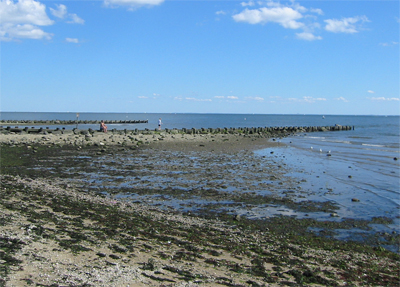
A view of the jetties beside the inlet to the tidal marsh at East Beach, Sherwood Island State Park, Westport.
Of course, with protection comes responsibility. There is more to do. The '95 CT DEP wetlands report notes that "coastal intertidal flats have not received the same protection, with tens of acres still dredged each year. Although tidal wetlands laws have been enacted to 'protect' coastal wetlands, stronger regulations are necessary to preserve all remaining tidal wetlands and mudflats for generations to come."
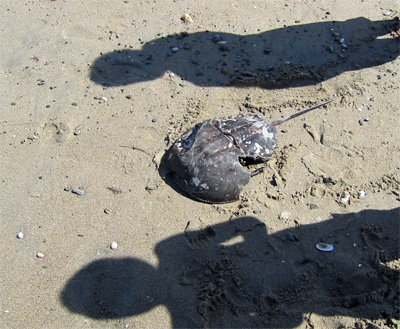
A large horseshoe crab shell the boys and I found along East Beach on our way to the jetties.
Want to dip a toe in the water? Try participating in one of the
beach cleanups being organized by
Save the Sound this month. They have posted a list of scheduled cleanups by town, up and down the shore. It's a great way to extend your summer beach season, and to teach kids to care for areas such as tidal marshes.


